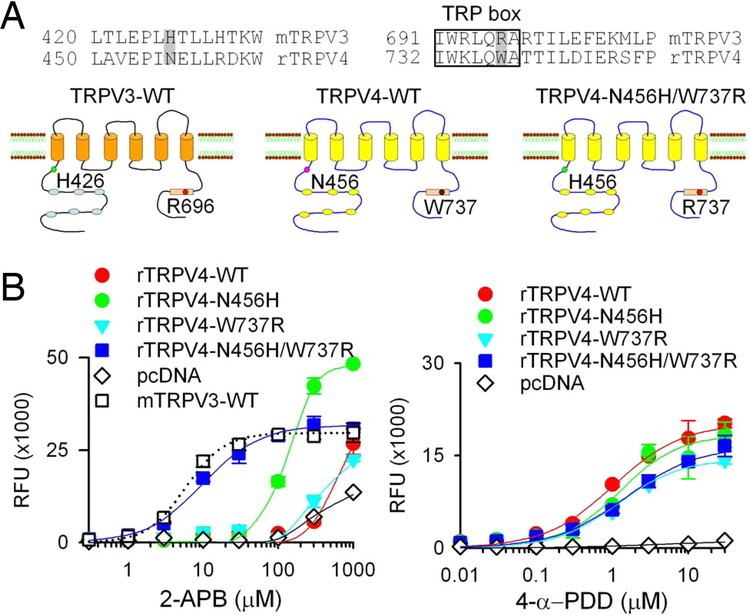Entrez 162514 | Ensembl ENSG00000167723 | |
 | ||
Aliases TRPV3, FNEPPK2, OLMS, VRL3, transient receptor potential cation channel subfamily V member 3 External IDs OMIM: 607066 MGI: 2181407 HomoloGene: 17040 GeneCards: TRPV3 | ||
Transient receptor potential cation channel, subfamily V, member 3, also known as TRPV3, is a human gene encoding the protein of the same name.
Contents
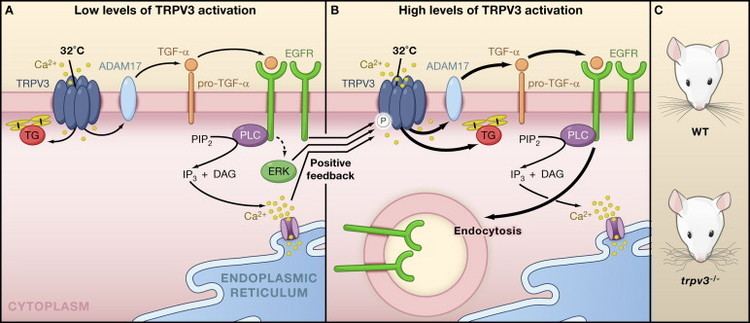
The TRPV3 protein belongs to a family of nonselective cation channels that function in a variety of processes, including temperature sensation and vasoregulation. The thermosensitive members of this family are expressed in subsets of sensory neurons that terminate in the skin, and are activated at distinct physiological temperatures. This channel is activated at temperatures between 22 and 40 degrees C. The gene lies in close proximity to another family member (TRPV1) gene on chromosome 17, and the two encoded proteins are thought to associate with each other to form heteromeric channels.
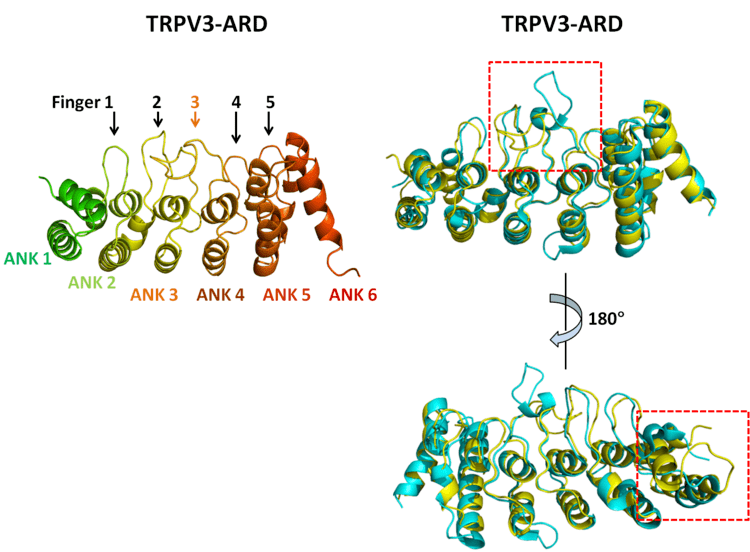
Physiology of TRPV3 channel

The TRPV3 channel is widely expressed in the human body, especially in the skin in keratinocytes, but also in the brain. It functions as a molecular sensor for innocuous warm temperatures. Mice lacking these protein are unable to sense elevated temperatures (>33 °C) but are able to sense cold and noxious heat. In addition to thermosensation TRPV3 channels seem to play a role in hair growth because mutations in the TRPV3 gene cause hair loss in mice. The role of TRPV3 channels in the brain is unclear, but researchers found that they play a role in mood regulation, and that a protective effects of Incensole acetate were partially mediated by TRPV3 channels.
Modulation
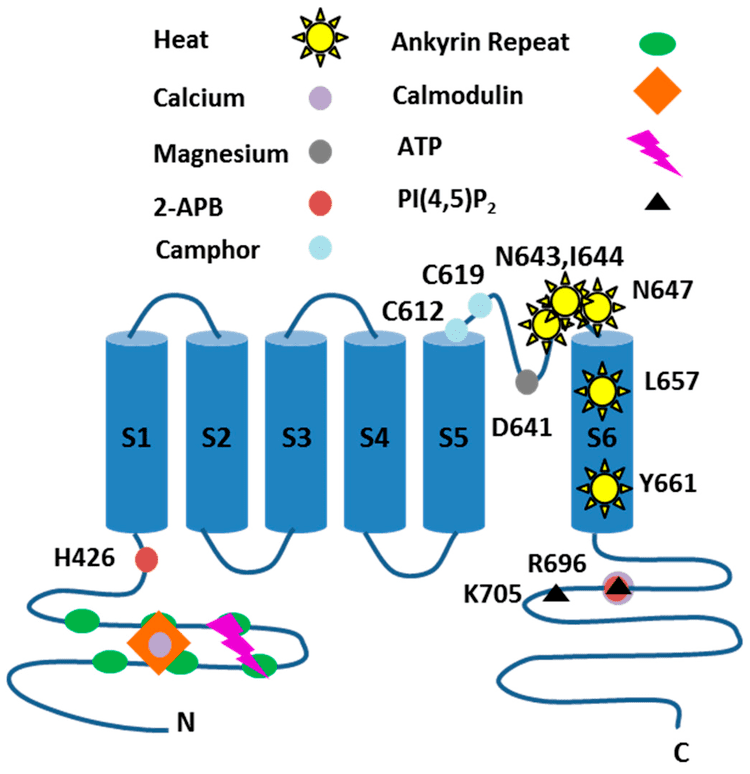
The TRPV3 channel is directly activated by various natural compounds like carvacrol, thymol and eugenol. Several other monoterpenoids which cause either feeling of warmth or are skin sensitizers can also open the channel. Monoterpenoids also induce agonist-specific desensitization of TRPV3 channels in a calcium-independent manner.
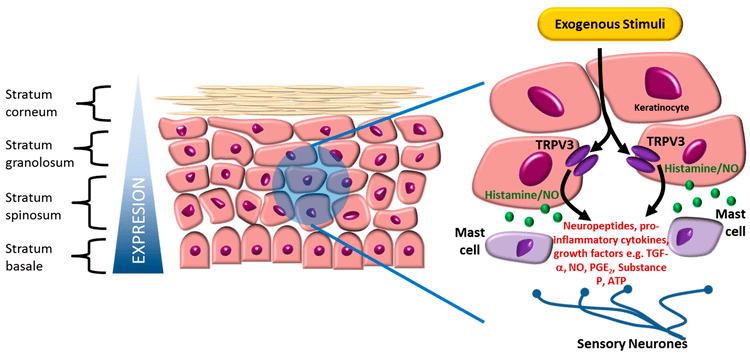
Resolvin E1 (RvE1), RvD2, and 17R-RvD1 (see resolvins) are metabolites of the omega 3 fatty acids, eicosapentaenoic acid (for RvE1) or docosahexaenoic acid (for RvD2 and 17R-RvD1). These metabolites are members of the specialized proresolving mediators (SPMs) class of metabolites that function to resolve diverse inflammatory reactions and diseases in animal models and, it its proposed, humans. These SPMs also dampen pain perception arising from various inflammation-based causes in animal models. The mechanism behind their pain-dampening effects involves the inhibition of TRPV3, probably (in at least certain cases) by an indirect effect wherein they activate other receptors located on neruons or nearby microglia or astrocytes. CMKLR1, GPR32, FPR2, and NMDA receptors have been proposed to be the receptors through which these SPMs operate to down-regulate TRPV3 and thereby pain perception.
